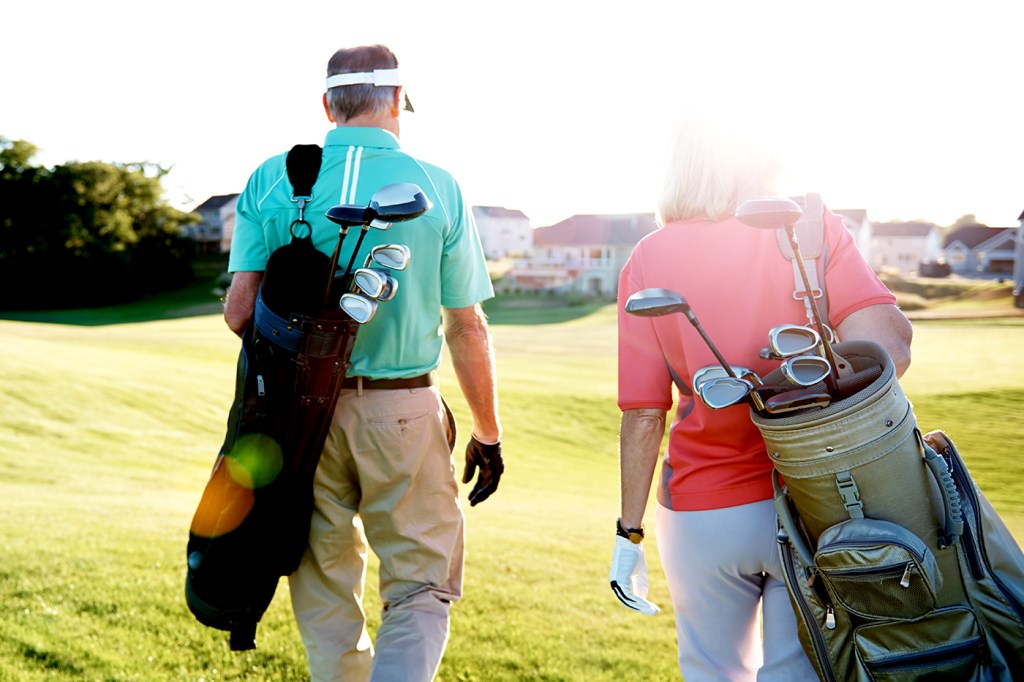Is it healthier — as Biden quipped — to ‘carry your own bag’ while playing golf?
“Whether carrying a golf bag is beneficial, in addition to the walking … while playing golf likely depends on an individual’s health and fitness,” says Art Kramer, director for the Center for Cognitive and Brain Health.

The first presidential debate between Joe Biden and Donald Trump was filled with excruciating moments — from Biden’s overall unintelligibility, to Trump’s uttering frequent falsehoods.
But one episode echoed throughout the headlines days later: when the pair had a go at each other over their golf games. The exchange saw Biden challenge Trump to a golf-off, but only if the former president carried his own bag of clubs.
Bit of an odd zinger, no doubt. But why carry the bag when you can ride around on a gulf cart?
Art Kramer, a Northeastern University psychology professor and director of the Center for Cognitive and Brain Health, says that physically lugging a golf bag — which can sometimes weigh up to 30 or 40 pounds — can potentially yield some benefits. But it depends on a person’s overall health and fitness.
Featured Posts
“There is clearly an ever-expanding literature which suggests that physical activity and exercise is good for body, brain and mind,” he says. “Whether carrying a golf bag is beneficial, in addition to the walking — not using a golf cart, I hope — while playing golf likely depends on an individual’s health and fitness.”
“Even when you are an older adult, playing a sport well is not a requirement for these benefits,” Kramer continues. “Whether Biden or Trump is a better golfer is likely irrelevant to the benefits that can accrue from walking 18 holes during golf.”

But it’s not exactly clear that carrying the bag as opposed to pushing it or using an electric caddie translates into more rigorous exercise in terms of burning calories. According to one study, which followed 16 aspiring pro golfers over three competitive rounds on the same course, the difference in calories burned between those three kinds of bag transport methods were negligible.
Researchers found that, over the course of 18 holes, golfers who carried their bags burned an average of 688 calories compared to 663 for those who used an electric caddie, and 756 calories for those who pushed their bags.
Additionally, research shows that carrying your own bag can increase the risk of physical injury, especially to the lower back, shoulder and ankle.
A 2019 study examining the metabolic demands of single- and double-strapped golf bags found that the double-strapped bags required significantly less oxygen consumption and lower heart rates, among other things.
Still, the researchers acknowledged the burden of the carried bag.
“A golf bag filled with a set of clubs provides a substantial load,” the researchers wrote. “When carried over distance this can increase the demands placed upon the golfer, leading to discomfort, fatigue and injuries.”
According to the National Golf Foundation, of the more than 25 million active golfers in the U.S., roughly two-thirds ride golf carts while playing.
Golf bag transportation, they wrote, “must therefore be recognized as a factor in reducing the risk of injury and improving playing performance.”
In the world of golf, the rule of thumb is that a golfer should try to make sure his or her golf bag is lighter than 20% of the person’s body weight.











